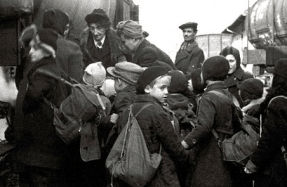REIGN of TERROR

The evening sun hangs high over the courtyard of the Palais de Justice as the little cart makes its way through the vast crowds. Its passengers, three dirty and haggard men, look bleakly towards the ground, ignoring the heckling of the onlookers. One is badly beaten, his skin a pale colour and a bandage wrapped around his head. The dirty, tattered cloth is the only thing holding his jaw together. Across the square, the silhouette of the guillotine stands tall against the sky. Suddenly a woman pushes her way through the crowd, reaching the cart. “Monster spewed from Hell!” she cries. “The thought of your punishment intoxicates me with joy.” It is 28 July 1794 in Paris and Maximilien Robespierre is about to be executed. But just what is it that caused France to react so violently? Who was Robespierre, the man who now faced death at the hands of madame guillotine? From 5 September 1793 to 28 July 1794, France found itself in the grip of the ‘Terror’ – a brutal period of state-sanctioned violence, which divides historians to this day. Historian Ian Davidson says, “it came without any defined aims or policy and was carried out without any detectable rules,” whereas others believe it was an honest attempt to save the revolution.
The French Revolution had begun in 1789 and by 1792 the monarchy had been abolished and the Republic declared. However, by the beginning of 1793 the revolutionary government ruled over a country in turmoil. In March, the relatively conservative and highly religious department of the Vendee, in the lower western region, began to revolt against the conscription acts introduced in February. Soon discontent spread and other areas such as Lyon and Normandy similarly became openly dissatisfied. By May, rebel factions had taken key towns in
You’re reading a preview, subscribe to read more.
Start your free 30 days





